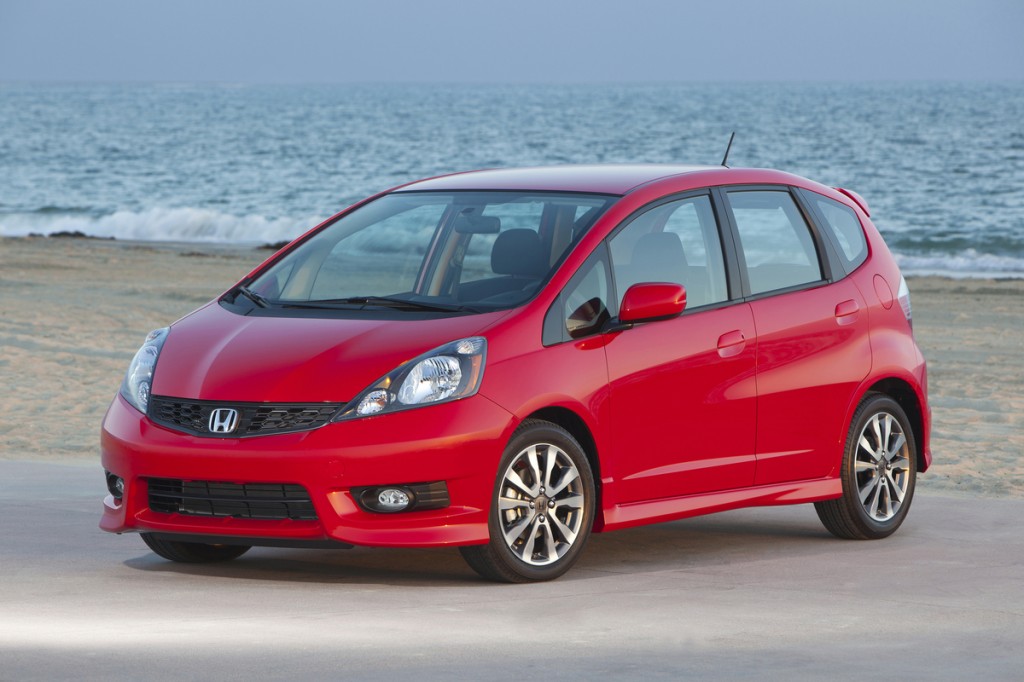If you're in the market for a fuel efficient vehicle your choice is better than ever.
Virtually every manufacturer now offers a high-mpg vehicle, but Honda could lay claim to being one of the first. Since the Civic arrived back in the 1970s, the Japanese carmaker has made fuel economy a high priority in its cars.
These days cars like the 2012 Honda Insight and 2012 Honda Fit are Honda's main contenders for inexpensive, fuel-efficient vehicles. But if you're looking to improve your gas mileage, reduce costs and go greener, are you better off with the hybrid, or the efficient gasoline option?
To help you choose, let's take a look at the numbers...
Economy
Ultimately, whether you're looking to reduce your environmental impact or simply save money on gas, economy is the most important factor.
Here, it's an immediate victory for the hybrid. Using a 1.3-liter variant of the 1.5-liter gasoline engine found in the Fit, and hooked up to Honda's Integrated Motor Assist (IMA) hybrid system, the Insight's 42 mpg combined rating soundly beats the 31 mpg of the automatic Fit.
The Insight's hybrid advantage can be seen in city mileage, with a rating of 41 mpg. The aerodynamic shape also helps the highway rating of 44 mpg. In comparison, the 1.5 Fit manages 28 city, 35 highway. With a manual transmission, those figures reduce to 27 city, 33 highway - so you're certainly better buying the auto.
Performance
Here, the Fit strikes back. There's not a lot that's "green" about higher performance, but it's still an important consideration. After all, you appreciate a little extra power every time you join the flow of freeway traffic, or need to overtake.
The Fit's 1.5-liter makes 117-horsepower, to the Insight's 98-horsepower. Along with lower weight (2,617 lbs plays 2,747), that helps acceleration, with 60mph available from rest in shortly over 8 seconds. By comparison, the Insight covers the same sprint in around 12 seconds. Both are easy enough to drive, with CVT transmission in the Insight, and a 5-speed auto in the Fit.
The Insight does counter with strong torque from low revs, thanks to the electric assistance. It makes 123 pounds-feet from only 1,000 rpm, where the Fit needs 4,800 on the clock to make its peak 106 pounds-feet.
2012 Honda Fit Sport
Equipment and practicality
Surprisingly, given the extra length of the Insight, the Fit actually has greater interior passenger and cargo volume, mainly thanks to its high roof-line.
The Fit also noses ahead on equipment. Though the Insight is available with many of the same options as the Fit, initial purchase price is higher so you can get a higher-specified Fit for an Insight of the same price. A base-spec Insight costs around $600 more than a high-spec Fit Sport with the auto transmission option.
Price
As hinted above, you need to spend extra on the Insight to bring it up to the same equipment levels as the Fit, and it's already a more expensive car.
A base-spec Insight starts with an MSRP of $18,350, and the Fit Sport Auto from our comparisons comes in at $17,760 - though if you're prepared to put up with less equipment, you can take another couple of thousand off that.
The Insight will begin saving you money on fuel though. The EPA estimates that over 15,000 miles, with a mix of 45 percent highway, 55 percent city driving, the Insight will cost $1,207 a year in gas. The Fit adds another $400 to that - and you can keep adding to it if your annual mileage is higher, or if the majority of your driving is in the city.
Conclusion
On the face of it, Honda's Fit seems to be a much better bet overall than the Insight. It performs better, has more space, and more equipment. To top it all, it's also significantly cheaper to buy. This could be why the Insight has so far failed to match Honda's sales expectations - turning in around 20,000 units a year, rather than a hundred thousand.
However, if economy and low emissions are your main concerns, then it can't get near to the Insight, and if you regularly drive longer distances the shorter tank range of the Fit - by more than 100 miles - would soon start to irritate.
Data on the EPA website also suggests that Insight owners are averaging comfortably over the EPA estimates - up to 50 mpg in some cases - so the fuel you save could be even greater.
If ourtight cost is your main concern, then the Fit offers a lot for your money and is still an economical vehicle - but the Insight is definitely the greener choice, and could save you more in the long-term.
+++++++++++













